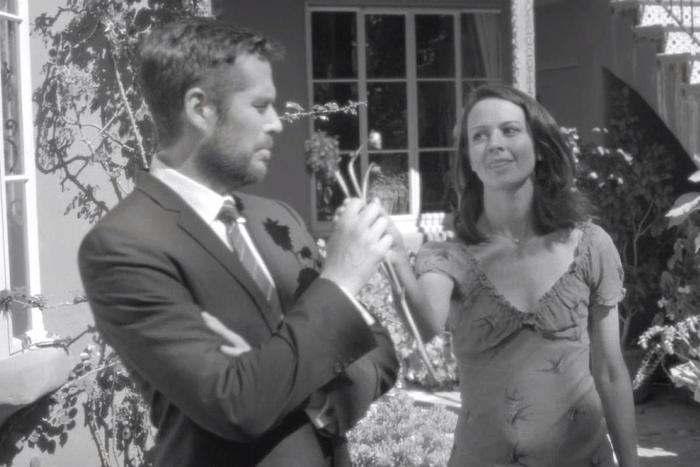The 1970s was an era of big questions. In an early discussion of how the consciousness-raising groups of nascent second wave feminism would be run, one woman, Anne Forer of the New York Radical Women group, proposed a guiding question: “Who and what has an interest in maintaining the oppression in our lives?” It’s the language of someone on the brink of discovering a deadly plot, like an investigative journalist in a movie about a CIA cover-up saying, “Follow the money!”
Sheryl Sandberg’s Lean In: Women, Work, and the Will to Lead has outraged commentators like the New York Times’ Maureen Dowd, because this radical question has been traded in for the corporate climber’s “How could I do better?” Yvonne Roberts of the Observer writes that Sandberg “is interested in telling women to pull themselves together or they’ll never join the alpha males’ club and the 1%—except as arm candy. It’s a message some may want to hear, but it’s conservative and neoliberal and doesn't even pass as feminist.” By advocating for personal rather than structural change, Sandberg is seen as inviting women to blame themselves.
In some ways, this feels to me like an error of genre. Sandberg’s is fundamentally a self-help book, and self-help books are inherently conservative—they accept the world as it is and ask the reader to change. Because Lean In is addressed to a group—women—rather than to individuals, it’s easy to miscategorize. When the book is understood as a feminist manifesto, it’s easy to see why Anne-Marie Slaughter, former director of policy planning for the U.S. State Department and professor of politics and international affairs at Princeton, called Lean In “at best half a loaf.” But Sandberg’s advice is not on how to make collective demands—it’s advice on how to get what you, in the singular, want.
Kathryn Schultz’s recent article in New York Magazine describes the evolution of the self-help book from its earliest iteration: Self-Help, by Samuel Smiles, published in 1859. In Smiles’ early career as the editor of the Leeds’ Times, he advocated for parliamentary reform; he wanted the vote for women, secret ballots, and electoral districts of the same size. In time, however, he decided that big changes were pointless; it was individual self-improvement that really made a difference. “No laws, however stringent, can make the idle industrious, the thriftless provident, or the drunken sober,” he wrote. “Such reforms can only be effected by means of individual action, economy, and self-denial; by better habits, rather than by greater rights.”
Stephen R. Covey, who died in July of 2012, wrote the best-selling Seven Habits of Highly Effective People in 1989, a paean to the power of self-regulation. It begins with Habit 1: Be Proactive. “You choose happiness. You choose sadness. You choose decisiveness. You choose ambivalence. You choose success. You choose failure. You choose courage. You choose fear,” Covey tells us. Don’t blame your failures on others, and don’t blame your bad mood on the weather. Take responsibility and you will achieve.
The consciousness-raising that Sandberg is attempting is sighted narrowly on achievement, which is why the Lean In strategy can read like a hilarious corporatized version of a 1970s sharing circle. The book comes with a online component: a kit for putting together your very own “Lean In Circles.” Sandberg wants small groups of women to come together to talk about what might be holding them back. But whereas in the ’70s, women sat in each other’s kitchens and talked about whether the vaginal orgasm was a myth devised by the patriarchy, Sandberg’s Lean In Circles will watch video presentations by public speaking coaches and business professors about “powerful” body language, business negotiation tactics, and “owning the room.”
Ownership is not always, in this case, metaphorical. Jodi Kantor wrote of Sandberg, “Even her advisers acknowledge the awkwardness of a woman with double Harvard degrees, dual stock riches (from Facebook and Google, where she also worked), a 9,000-square-foot house and a small army of household help urging less fortunate women to look inward and work harder.” But who would read a self-help book by someone with no education, no accomplishments, and no income who lives on the streets? While there are self-help books written by people who have experienced this—Liz Murray’s Your Personal Best: From Homeless to Harvard—they tend to be recovery stories, in which the narrative is of escape from bad circumstances and accession to some level of mainstream capitalist society. As a kid on the streets, Murray used to steal self-help books.
The most radical theorists understand feminism as an anti-capitalist enterprise altogether—the society we’ve built is based on fundamental inequities, and the only way forward is to rethink the notion of “value” and how we assign it. From this vantage point, the self-help that Sandberg offers is self-hindrance, which will make women even more complicit in perpetuating injustice. “The male supremacist Establishment and its forces of discrimination against women that consciousness-raising set out to critique have rolled with the punch,” said Kathie Sarachild in 1973, only five years after the first consciousness-raising groups were formed, in an address to the First National Conference of Stewardesses for Women’s Rights in New York City. “Now the oppositions to consciousness-raising frequently comes under the guise of support or partial support. The Establishment is trying to change consciousness-raising, weaken, dilute, and take away its strength so it won’t cause any more changes.”
Lean In Circles are not radical. They are essentially about competing in a man’s world, and the consciousness that’s being raised is consciousness of the ways in which women may unconsciously hold themselves back from that competition. This self-awareness is, in Sandberg’s hands, the first step towards a specific goal, and while the goal may be wrong for many of us—pouring a lifetime of blood, sweat, and tears into a website that lets people “like” each other’s cat pictures doesn’t seem worth it to me—the most self-helpful idea that Lean In contains may just be to stop doubting yourself. “Multiple studies in multiple industries show that women often judge their own performance as worse than it actually is, while men judge their own performance to be better than it actually is,” Sandberg writes. Remembering that you are probably far smarter and more competent than you think you are is good advice whether you want to occupy the corner office—or Occupy the corner office.






